Sourdough Pita Bread
Sourdough Pita Bread is actually quite easy to make. Using sourdough starter instead of commercial yeast extends the time, but it’s mostly hands-off. The payoff is a big boost in flavor and an amazing texture.
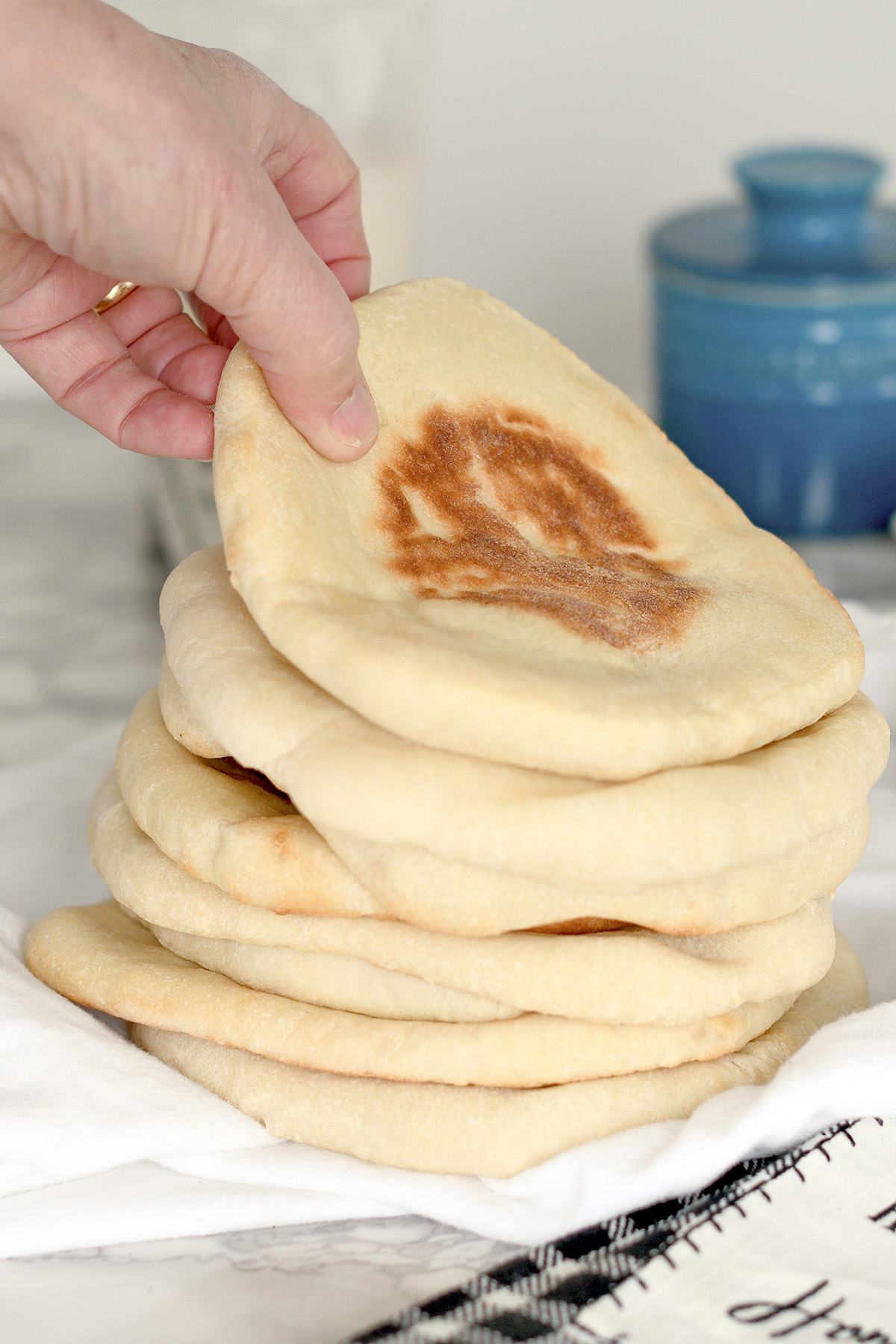
Table of contents
Why This is a Standout Recipe
Have you ever made pita bread at home? It’s so much fun to watch the rounds of dough puff up in the oven. I think you’ll be surprised how easy it is to make this delicious bread.
This Sourdough Pita recipe uses a full cup of starter for a deep flavor and the most amazingly moist and tender texture.
I’ll take you through the step by step process for making the best pita pockets using no commercial yeast.
The recipe can be made over two days or you can make the dough and bake it the same day. See the sample baking schedules at the end of the post.
These pitas are a great recipe to have on hand whenever you need to use your starter. The bread can be made in one day and they freeze beautifully. I almost always have a bag of pita pockets in my freezer.
If you don’t already have one, I can show you how to make a sourdough starter and how to feed a sourdough starter. In the meantime you can make Homemade Pita Bread with commercial yeast.
Ingredients
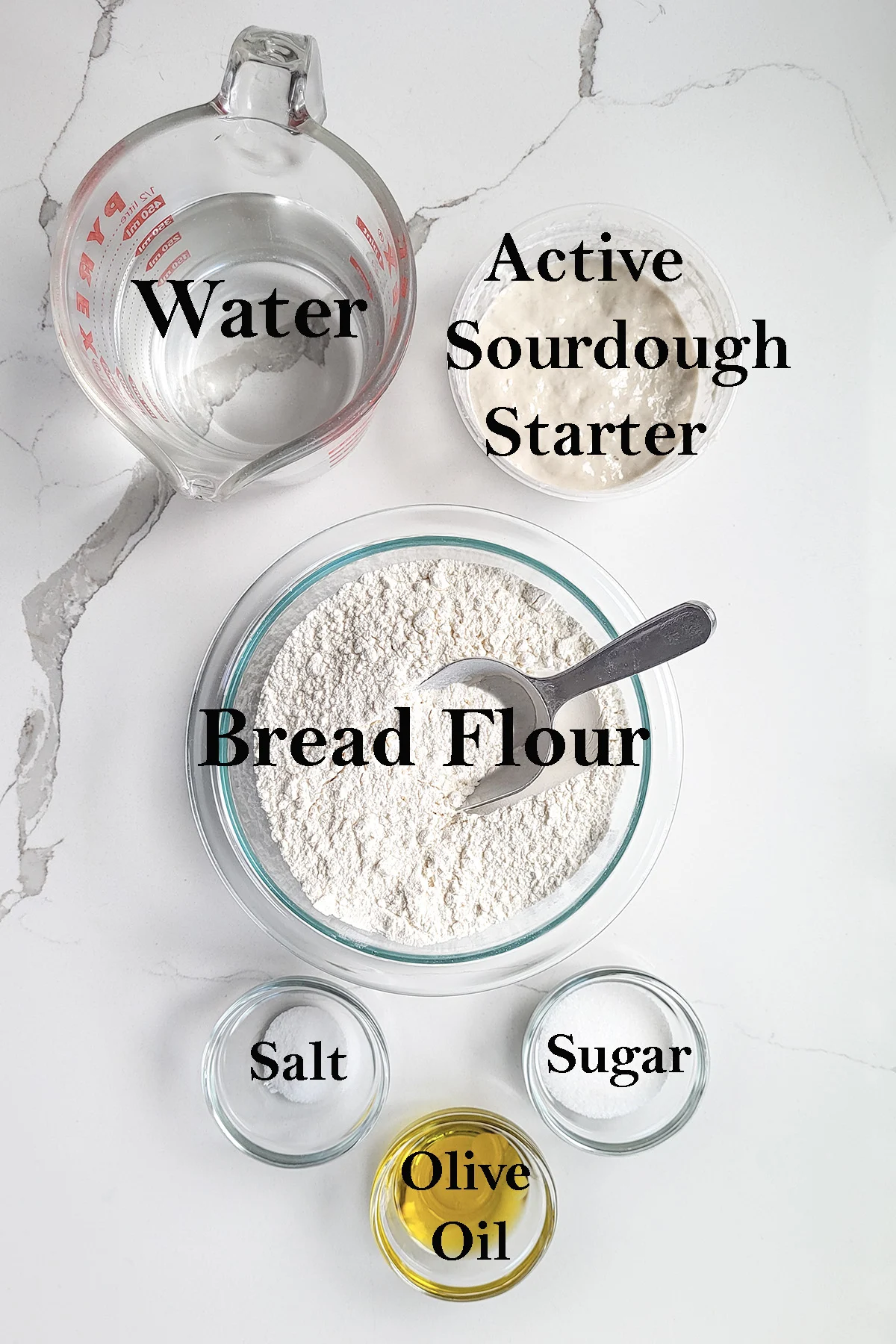
Ingredients Notes
- Active Sourdough Starter – Your starter should be at 100% hydration, recently fed and active.
- Bread Flour – High protein bread flour will develop enough gluten to allow the pita to puff up in the heat of the oven.
- Salt – For flavor.
- Sugar – For flavor and browning.
- Olive Oil – To enrich the bread and add flavor.
Process Photos
See the recipe card for detailed measurements and instructions.
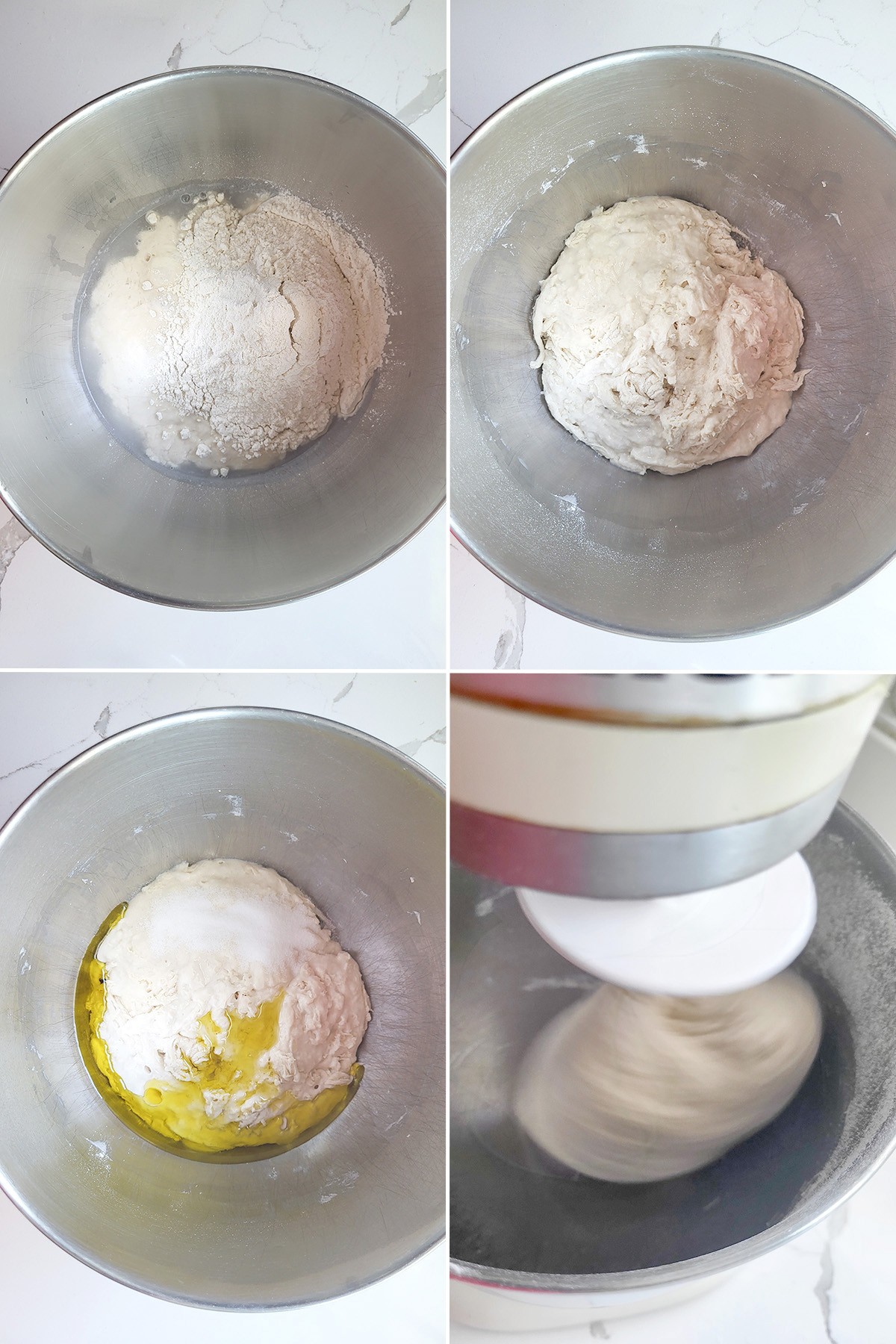
- Combine the active starter with the water and some of the flour. Mix to combine.
- Cover the bowl with plastic wrap or a damp tea towel and set it aside for 30-60 minutes.
- Add the olive oil, sugar and remaining flour. Switch to the dough hook attachment if using a stand mixer.
- Knead the dough for 5 minutes or until the dough clears the sides of the bowl and clings to the hook. If kneading by hand knead until the dough is silky and elastic.
Autolyse
Combining the starter with the water and flour and letting it rest is called “autolyse”. This process gives the flour time to absorb the water and it gives the gluten and yeast a head start before you add the other ingredients to the dough. You can skip this step if you’re in a hurry, but it’s worth a little more time for a dough that’s easier to work with.
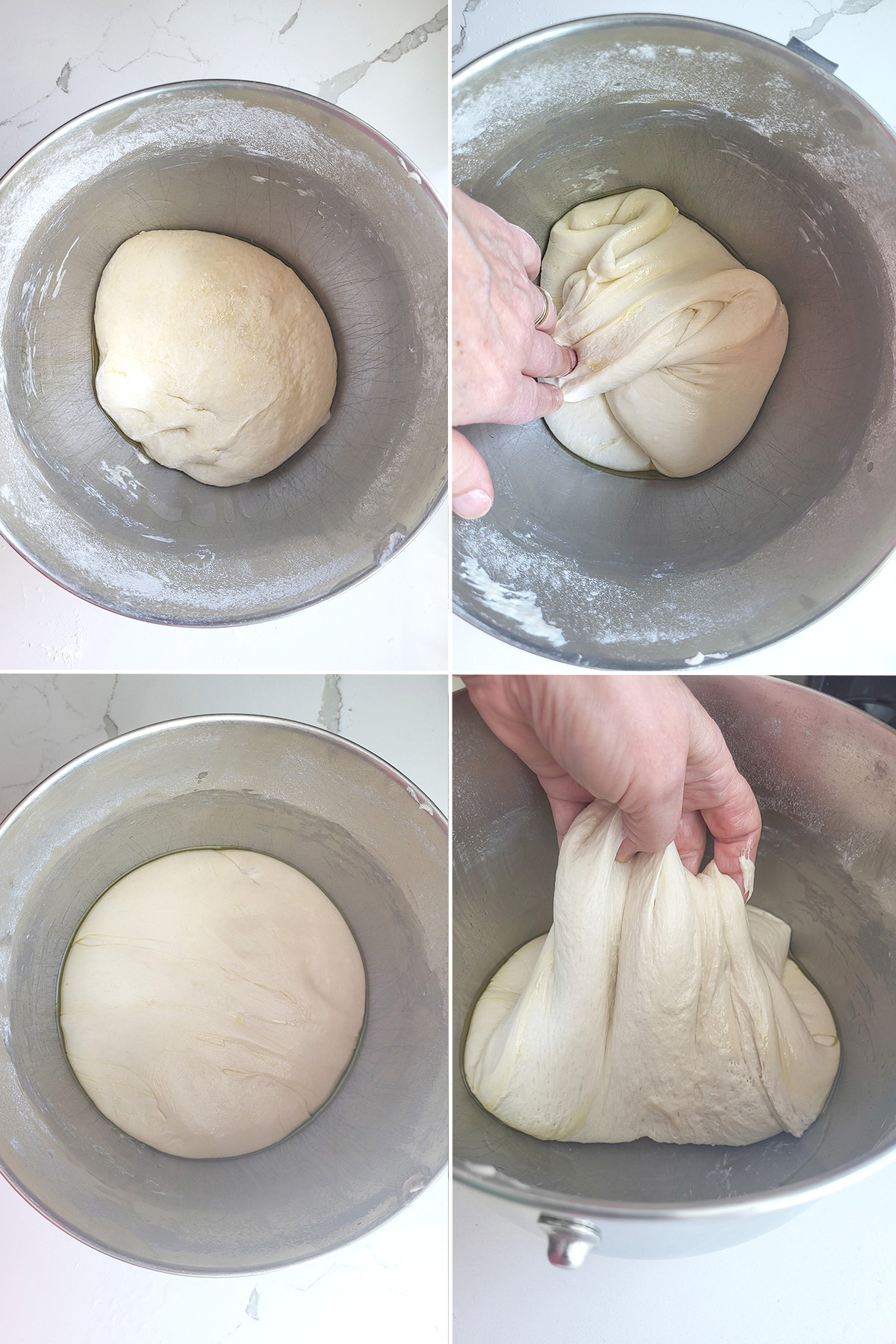
- Set the dough aside at room temperature to bulk ferment.
- After 1 hour fold the dough. Continue to fold every hour.
- The dough should become more elastic and cohesive during the 3-5 hour fermentation.
- By the end of bulk fermentation the dough should feel lively and elastic. At this point the dough can be refrigerated for up to 2 days or you can continue forming and baking the pitas the same day.
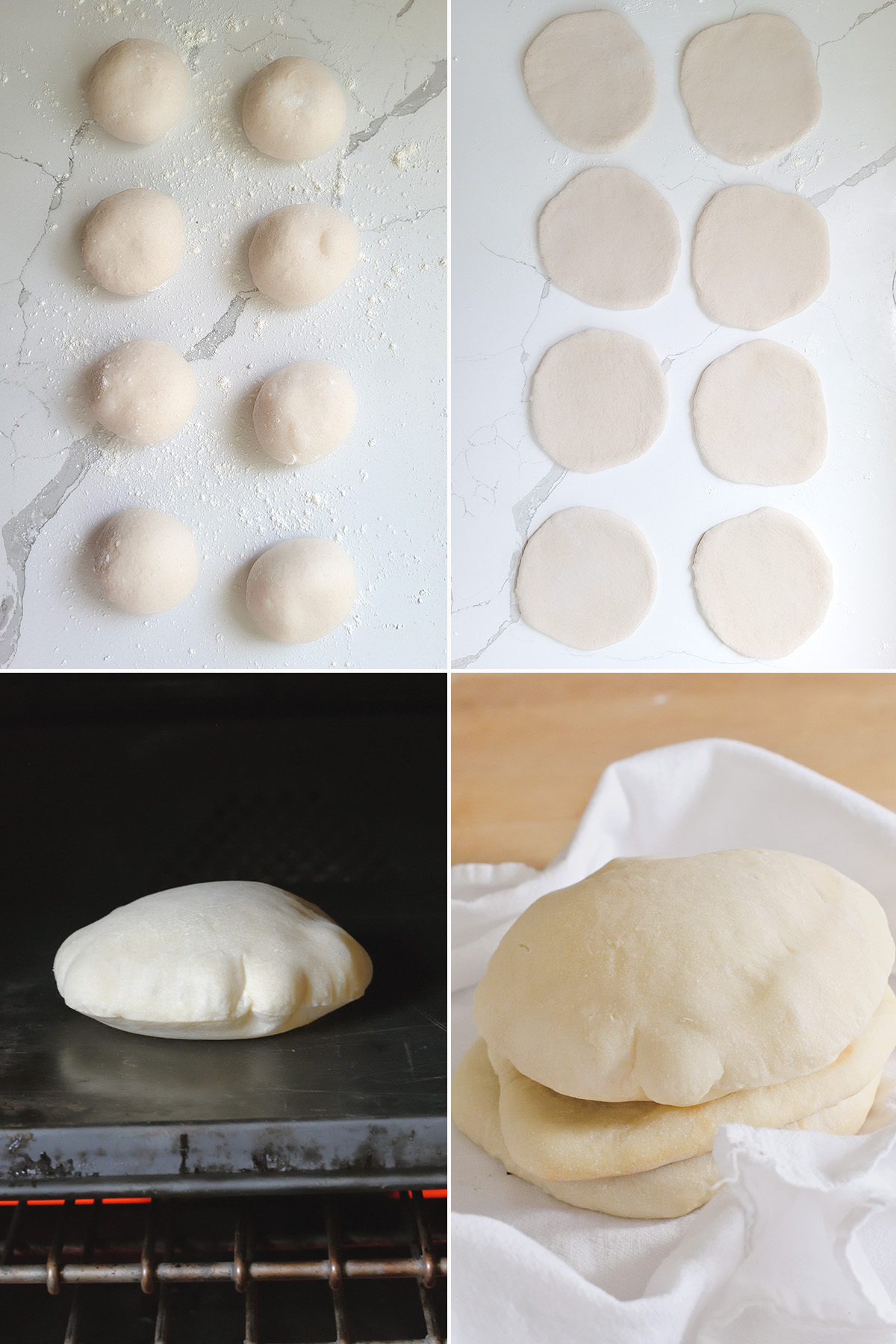
- Divide the dough into 8 equal portions. Using a cupped hand, roll each piece into a tight dough ball.
- Roll each dough balls to a 6-7″ round. Roll all the rounds before you begin baking.
- Bake the pitas in a very hot oven on a dark colored pre-heated sheet pan, baking steel or pizza stone. I can fit 2 rounds at a time on my baking steel. Bake until the pita is puffed and lightly browned on the bottom. If the pita fails to puff bake until the top is set and the bottom is brown.
- Wrap the warm pitas in a clean kitchen towel as they come out of the oven.
Recipe Tip
Roll all the pita rounds before you start baking. This allows the first rounds to rest a bit before going into the oven. The pitas will puff better after a short rest.
Baking Schedules
Two Day Schedule
- If your starter needs feeding, do that early in the morning of the day you want to make the dough. You want to use the starter at it’s peak for mixing the dough.
- Mix the dough in the afternoon. Allow it to ferment at room temperature during the day.
- Refrigerate the dough in the evening before going to bed.
- The dough can stay in the refrigerator for 2-3 days at this point.
- Take the dough out first thing in the morning and let it come to room temperature.
- Roll and bake the pita rounds once the dough is at room temperature.
- You should have fresh bread by lunch time.
One Day Schedule
- If your starter needs feeding, do that the night before the day you want to bake.
- Mix the dough first thing in the morning. Allow it to ferment at room temperature until late morning/early afternoon.
- After the bulk fermentation is done, roll and bake the pita rounds.
- You should have fresh bread by lunch time.
FAQs about making Sourdough Pita Bread:
Yes, start the dough early in the morning and skip the refrigeration step.
If your oven is not hot enough the pita may not puff properly. If the sheet pan or pizza stone is not pre-heated the pitas won’t form a pocket. If the bread is rolled too thin in spots it may not puff properly.
The bread keeps for 1-2 days at room temperature.
Yes! Store the pita rounds in a freezer bag for up to 3 months.
Wrap the pita in foil and place in a 200°F oven until warm.
I know you hate to throw away that sourdough discard. Check out these recipes that use sourdough discard.
More recipes to try:
- Sourdough Whole Wheat Pita Bread
- Basic Sourdough Bread
- Sourdough Pizza Crust
- Sourdough Baguette
- Sourdough Soft Sandwich Bread
- Sourdough Rye Bread
- Sourdough Whole Wheat Bread
- Sourdough Cracked Wheat Bread
- Sourdough Potato Buns
- Sourdough Hoagie Rolls
- Sourdough Brioche
- Sourdough Semolina Bread.
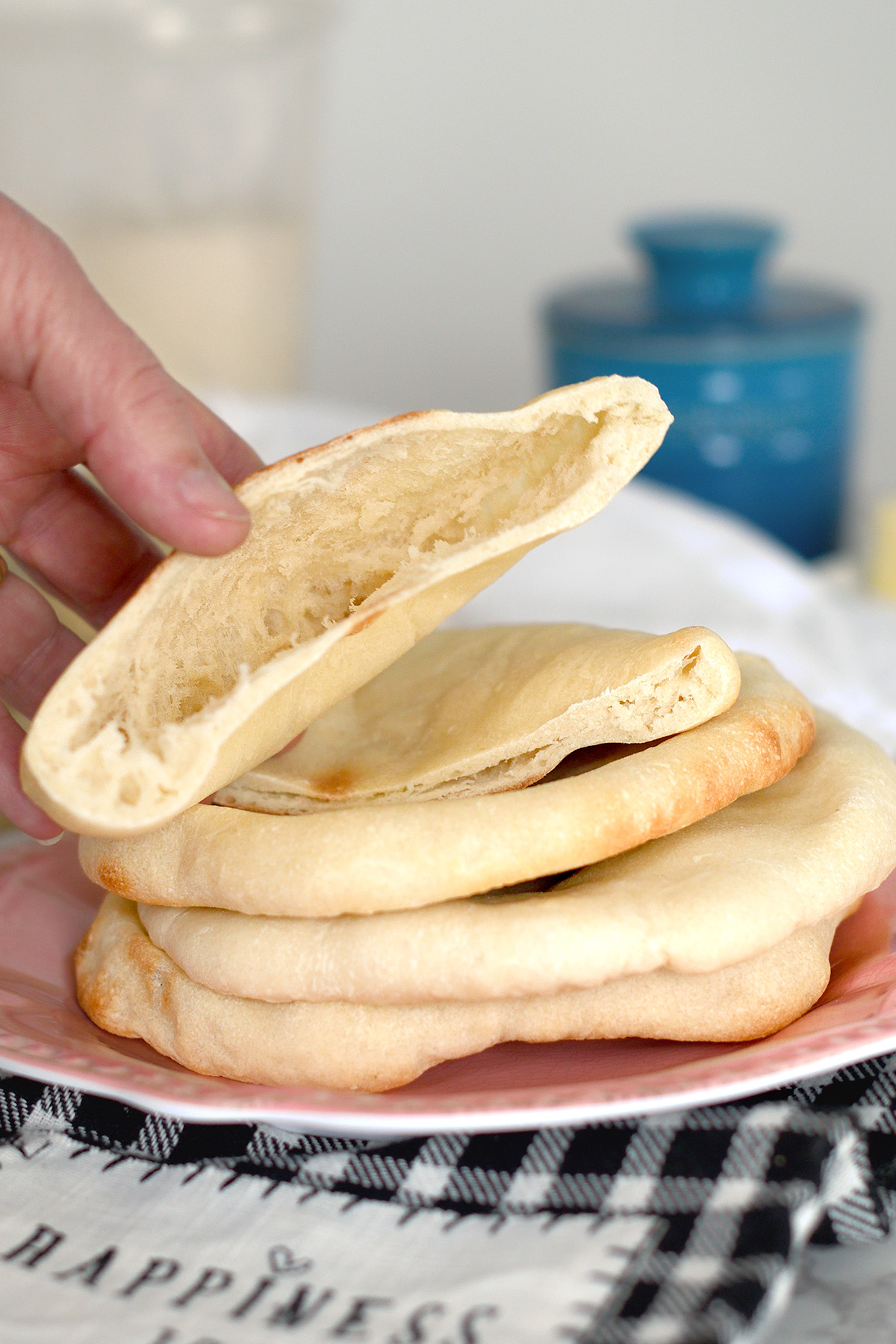
If you love this recipe as much as I do, I’d really appreciate a star rating and a quick comment. Ratings and comments help my recipes show in search results. Thanks!
Sourdough Pita Bread Recipe
Ingredients
- 8 oz active sourdough starter (1 cup (100% hydration))
- 8 oz warm water (1 cup)
- 13 ¾ oz bread flour (2 ¾ cups, see note)
- 1 oz olive oil (2 tablespoons)
- ½ oz granulated sugar (1 tablespoon)
- 1 ½ teaspoons table salt
Instructions
- In the bowl of a stand mixer fitted with a paddle, or in a large mixing bowl, combine 8 oz active sourdough starter, 8 oz warm water and half of the flour. Mix until it forms a thick batter. Cover the bowl and set aside for 30-60 minutes.
- If using a stand mixer, switch to the dough hook. Add 1 oz olive oil, ½ oz granulated sugar and 1 ½ teaspoons table salt then mix to combine. With the mixer running on low, add the remaining flour. Mix until the dough clings to the hook and clears the sides of the bowl. If mixing by hand add flour until you can no longer stir, then turn the dough out onto a floured surface to finish by hand. Knead 5 minutes. Form the dough into a smooth ball.
- Put the dough into a lightly oiled bowl, turning once to coat the dough. Cover the bowl and set it aside at room temperature.
- After 60 minutes uncover the bowl, lift one side of the dough and fold it into the middle of the dough. Repeat with the other three sides of the dough then flip the dough over. You're basically turning the dough inside-out to redistribute the yeast and develop the gluten.
- Every 60 minutes repeat the procedure again. By the end of 3 hours the dough should be lively, elastic and airy. If the dough is still sluggish give it another hour or two at room temperature.
- Cover the bowl tightly and refrigerate overnight (see note). Remove the bowl from the refrigerator in the morning and allow the dough to come to room temperature.
- Preheat the oven to 450 °F. Use the convection setting if you have it. If you have a baking steel or stone place it in the oven. Otherwise, place a baking sheet on the bottom rack of the oven. If you have a dark colored baking sheet use that. You can even use a cast iron skillet but may have to bake the bread one at a time.
- Divide the dough into 8 equal pieces. Using a cupped hand on a lightly floured surface, roll each piece of dough into a tight ball. Use a rolling pin to roll each ball into about a 6” round. If the dough springs back too much let it rest for 5 minutes and continue rolling. Once all the pitas are rolled you can begin baking.
- Place two pita rounds on the baking steel or pan. Close the oven and bake until the rounds puff up like a balloon, about 3-4 minutes. You don’t need to flip the bread. Remove the baked breads and wrap in a clean kitchen towel while you continue baking the remaining pitas.
- The pitas are best the day they are made, but they also freeze very well.
Would you like to save this recipe?
As an Amazon Associate and member of other affiliate programs, I earn from qualifying purchases.

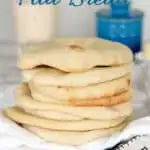
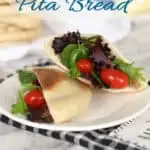
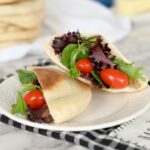


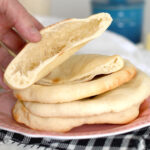





For what it’s worth, I was mixing this dough and getting an un-kneadable shaggy mass, then I remembered that I was using all-purpose flour instead of bread flour. I have used AP flour in another recipe that called for bread, but I had to reduce the water by about 1/6th, because bread flour tends to absorb more water and AP doesn’t.
So if you’re getting a very wet dough, it might be the flour as well as your idea about the starter.
I’ve used this recipe twice so far and I got dough that was way too wet both times, using the exact measurements provided. I added flour with good results, but it was bothering me that I didn’t have the success that others did with the original recipe, especially since the hydration percentage is fairly reasonable.
After some thought, my best guess is that because the starter is such a significant portion of the dough, the variability is occurring there. Even if the starter hydration is 100% consistently, I think it’s possible that my starter (fed ~10 hours ago) has almost entirely fermented the flour, and therefore it doesn’t add any structural capability to the dough while still adding wetness. I know my feeding schedule may not be best practice, but it may explain the trouble that others are having as well.
Take this with a teaspoon and a half of salt, it’s just a thought from a ‘very’ amateur baker.
Hi Greg, I agree with you that the hydration and activity of the starter can have a great impact on the dough. I notice with my starter that it is quite thick when I feed it and thins out as it ferments. Sometimes after a week or two the discard is the texture of heavy cream. For best results I recommend using the starter when it has just about doubled in volume after a recent feeding but is still very active.
Greg and Eileen, I have the same problem. I’ve made this recipe twice now, the first time I measured with cups, tsp, tbsp, etc. I’m currently making the second try and weighed all the ingredients and it never shaped into any of the “balls” necessary, just loose blobs, and I can’t move it from rolling it out (stuck to the pin, the mat, the scraper) to the hot stone, it just melts into a messy blob. Not sure what’s wrong. It bubbled up in the fridge quite well. Starter seems happy and is fed at least once a week, kept in the fridge between feedings. I’m pretty frustrated at this point.
I was gifted some starter from a friend in the beginning of quarantine and after trying many many recipes I have now realized that all of the ones I love and repeat are yours. Thank you for making my quarantine that much better!!!
Thanks!
I normally measure my sourdough bread recipe ingredients with a scale by weight, however most scales don’t weigh ml since that’s a volume. I added the wrong amount of water since it is shown in ml. It may be helpful to write it in grams instead. I’ve noticed that’s how all just about all bread recipes are….
I see what you’re saying. I tend to measure my wet ingredients in a measuring cup which is why I use ml. Maybe I’ll start adding grams as well.
All the ingredients you show are listed in grams except water :/
Yes, as noted in my response to your original comment. I scoop flour directly into the bowl on the scale, but since the water is put into a measuring cup to pour, I use the ml measurement. For future reference, the conversion from oz to grams is 28g per ounce.
I also wanted to add that we didn’t make them all at once – we refrigerated some of them after the first rollout, then rolled and baked them straight from the fridge the next day and they were just as good.